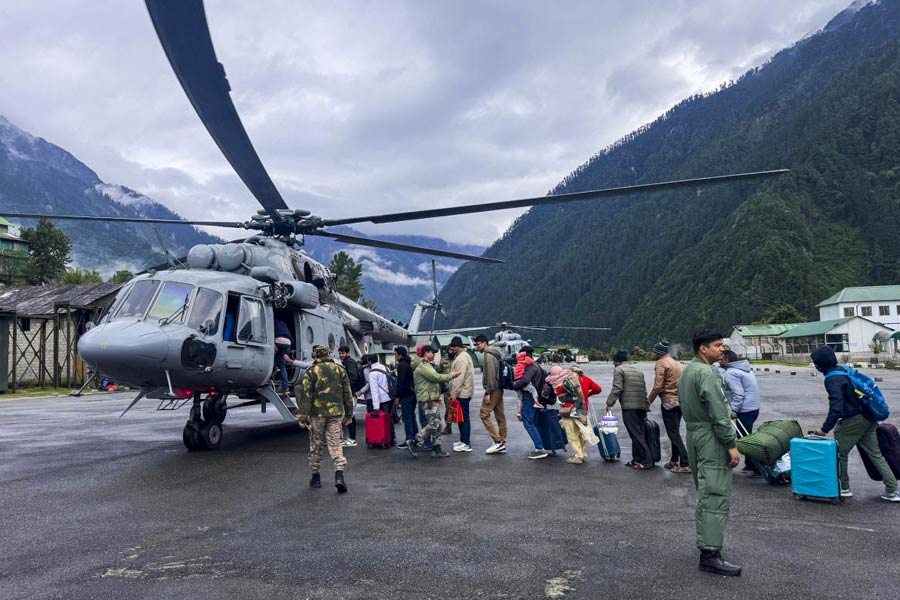Stories within a story
 |
The Ramayana: A Modern Translation By Ramesh Menon, HarperCollins, Rs 795
It is never easy to translate an epic. Ramesh Menon renders the Ramayana in prose, which is understandable. He is also forced to condense the epic, may be under pressure from his publishers. The core narrative is there, together with a nice little epilogue which records a variation of the Ramayana that does not appear in the northern versions. But an epic is always more than the core narrative. The detours and digressions are equally charming and attractive. Menon notes at the very beginning the most interesting aspect of the narrative structure of Valmiki’s epic. Valmiki hears the story of Rama from Narada. Valmiki’s spontaneous curse on the huntsman who had killed the mating birds (Ma nishada…) gives to him the verse form of the epic and the key to the story. He composes the epic and teaches it to Lav and Kush who sing it in the court of Rama. The king is the listener in a recounting of his own achievements. The composer is a character in the epic itself, much like Vyasa in the Mahabharata. The translation is lucid and it will appeal to those who are unable to read the epic in any Indian language. The language is modern, if a trifle purple in patches.
Pretending to be english
Family History By Janaki Agnes Penelope Majumdar, Oxford, Rs 345
This is the memoir of one of the daughters of W.C. Bonnerjee, the first president of the Indian National Congress. It has been edited with an introduction by Antoinette Burton, professor of history in the University of Illinois, Urbana-Champaign. The Bonnerjees were among Calcutta’s first truly Westernized families. And the children of the Bonnerjee family did not learn to speak any Indian language. Much of their time was spent in the suburbs of London where they pretended to be English. When they came back to Calcutta, they were out of place here save in the small elite Westernized circle. This book has no reference to what life was really like in Calcutta. The Bonnerjee girls were born to a kind of privilege, and they never questioned the basis of that privilege. To see in this text the emergence of some kind of nationalist formation is to make exaggerated claims on its behalf. One has only to place this text next to the autobiography of Rasasundari Debi to see how superficial and irrelevant the Bonnerjees’ lives were.
Scale the dangerous heights
Spies in the Himalayas: secret missions and perilous climbs By M.S. Kohli and Kenneth Conboy, HarperCollins, Rs 395
After the first Chinese nuclear test, the United States of America and India decided to mount a joint intelligence operation to set up a sensory device high up on the Himalayas. This could not be carried out by career spies either of the James Bond or the George Smiley variety. The job demanded the skills of a mountaineer experienced in the hazards of high-altitude climbing. In this case, the climbs had an added hazard since they were clandestine. The operation was led by M.S. Kohli, who led the successful Everest expedition in 1965. The story of this operation was a well-kept secret. This is the first time it has been made public. It draws on the diaries of many and is an account from the inside. This is an amazing story which proves that truth is stranger than fiction.











